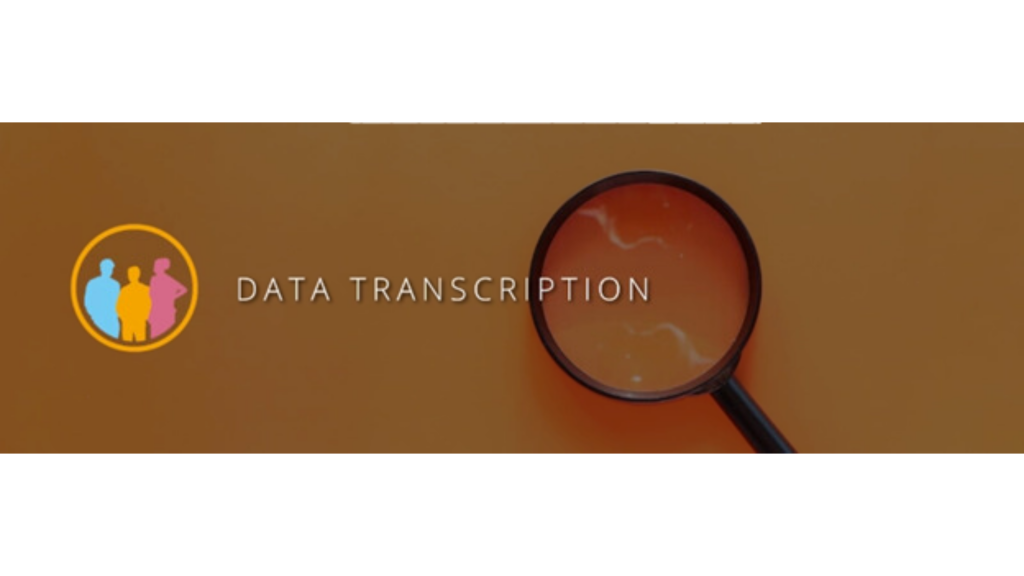Introduction
Digitalization has had an influence on virtually every industry. The use of digital processes has transformed how firms function, allowing them to attain higher levels of efficiency, accuracy, and accessibility. Data transcription is critical in the digital transformation process. The procedure entails transforming audio or visual data into written or textual form. Businesses frequently use professional transcribing services to maintain accurate record keeping.
Transcribing your data is an essential step in realizing the benefits of digital technologies. Let’s look at how data transcription promotes digital transformation.
What is Data Transcription?

Data transcription is the process of transforming data from one format to another. In most situations, data transcription entails converting data from an analog source to digital representation. This includes translating paper papers into electronic documents like text or spreadsheets, as well as audio recordings into text format. For example, data transcription might be used to turn handwritten paper notes into computer-searchable data.
Why is it important?
Data transcription improves data accessibility and usability. Converting data to digital forms makes it easier to search, exchange, and transfer between applications and systems, resulting in faster and simpler data analysis. Transcribing your data might also help you save money on storage costs for actual papers or recordings.
How Data Transcription Supports Digital Transformation?
Digital transformation has significantly improved operational efficiency in a variety of industries, including healthcare, legal, finance, and media. Data transcription is the process of updating and organizing information to satisfy the requirements of digital storage systems. It guarantees that your data can be saved, accessed, and managed effectively in a digital context.

Transcribing your data and aligning it with digital protocols improves the productivity, interoperability, and general efficacy of your digital systems in several ways.
- Digital Accessbility
Transcribing data makes it easier to access. Information can be accessed quickly when required, which is critical for firms wanting to increase efficiency, decision-making processes, and overall productivity.
- Digital Transformation
Transcribing corporate data into a digital format is the foundation of the digital transformation process. It enables firms to transition from manual, paper-based operations to automated, technologically enhanced systems.
- Supports Automation
Automation needs digital data. Businesses that transcribe data into a machine-readable format create chances for automation, decreasing manual labor, eliminating mistakes, and increasing workflow efficiency.
- Integration between systems
Many digital solutions require data that is organized and standardized. Transcribing data into digital format enables seamless integration of various systems, encouraging consistent and accurate data across several platforms.
- Improved Analytics
Digital data is critical for meaningful analytics, allowing firms to make data-driven choices, detect patterns, and better understand their customers, operations, and the market. Advanced analytics techniques like statistical analysis, machine learning, and predictive modeling generate actionable insights from digital data, resulting in innovation, efficiency, and a competitive advantage.
- Adaptability to Technological Advancements
As technology improves, firms that have their data in digital format may easily adopt new and advanced digital solutions. This prepares them for the future and ensures their competitiveness in a continuously changing technological world.
For example, a retail firm that digitizes its inventory and sales data may use artificial intelligence (AI) algorithms to assess client preferences, optimize stock levels, and estimate demand, allowing them to make more informed decisions and remain ahead of the competition.
- Efficient Data Management
Digital solutions that excel at handling large volumes of data include Product Information Management (PIM) tools, Product Data Management (PDM) software, Enterprise Resource Planning (ERP) systems, and others. According to an article released by AI Research and Analytics firm AIMultiple, all corporate data must be transcribed and translated to a digital format before these solutions can be used. Transcribing data into digital format paves the way for effective data governance, storage, and retrieval.
- Better Collaboration
Digital data encourages cooperation both within and outside of the company by allowing for simple exchange, access, and collaboration on information and documents. Multiple team members can collaborate on the same paper using digital data.
For example, in a remote work environment, team members can collaborate on a project by viewing and modifying shared documents on a cloud-based platform. This removes the need for physical file sharing or long email exchanges, allowing for more efficient cooperation and increased productivity. Furthermore, digital data may be securely shared with other stakeholders, such as clients, partners, or vendors, promoting cooperation and building stronger business partnerships.
It is apparent that translating firm information and making it machine-ready is a necessary step toward digital transformation.
Concluding Thoughts
By converting your data to digital format, you may streamline your process, increase data visibility, make more informed decisions, and improve operational efficiency. Partnering with digital transcribing providers to convert corporate data to digital format is a proactive method for realizing the full potential of digital solutions. Professional transcription businesses like Oriental Solutions are equipped to manage massive amounts of data while ensuring its quality, laying the groundwork for effective digital transformation.

Transcribing your company’s data into a digital format is required to maximize the benefits of digital solutions, optimize your workflow, improve data visibility, improve decision-making, and boost operational efficiency.
Companies that need to manage a huge volume of data use digital transcribing firms to digitize it. Experts can assure high-quality data, which will pave the road for digital transformation.




